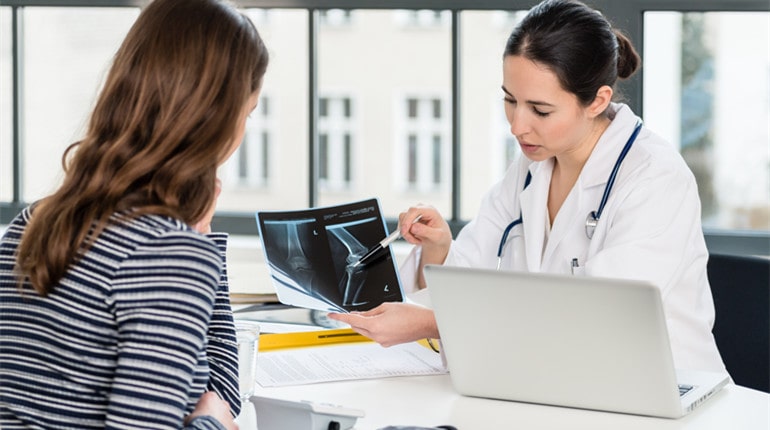Accidents, whether minor or severe, can have lasting impacts on our health. Often, in the rush to heal the primary injuries, we overlook the risk of secondary injuries that can occur during recovery. These secondary injuries can arise from a variety of factors, such as overexertion, improper care, or even due to the body compensating for the initial injury. Understanding how to prevent these additional injuries is crucial for a safe and efficient recovery. This article aims to shed light on the common secondary injuries post-accident and offer practical advice to avoid them.
Recognizing the Signs of Secondary Injuries
Secondary injuries might not be as apparent as primary ones but are just as significant. These injuries often manifest as new pain, swelling in different areas, or decreased mobility in parts of the body that were not initially injured. It’s important to be vigilant and monitor any changes in your body during recovery. Symptoms like increased pain during physical therapy, unexplained headaches, or stiffness in joints need immediate attention. Consulting with your healthcare provider upon noticing these signs can prevent further complications. Early detection is key to managing secondary injuries effectively.
The Risk of Overexertion
One of the common causes of secondary injuries is overexertion. During recovery, there’s a natural urge to return to normalcy as quickly as possible, which can lead to pushing the body beyond its current limits. It’s crucial to follow the recovery plan outlined by your healthcare professional and resist the temptation to accelerate the process. Overexertion delays the healing of the primary injury and puts you at risk of new injuries. Understanding and respecting your body’s current limitations is essential for a safe recovery.
Importance of Proper Care and Rehabilitation
Proper care and adherence to rehabilitation protocols are vital in preventing secondary injuries. This includes following prescribed exercises, attending all physical therapy sessions, and taking medications as directed. Rehabilitation exercises are specifically designed to ensure a balanced recovery, focusing on strengthening the body without causing additional strain. Skipping steps or altering the rehabilitation process can lead to imbalances and weaknesses, increasing the risk of secondary injuries. It is equally important to communicate openly with your healthcare providers about your progress and any concerns you might have.
Role of Assistive Devices in Preventing Injuries
Assistive devices such as crutches, braces, or splints play a significant role in preventing secondary injuries. These devices are designed to support and protect injured areas, allowing them to heal without additional strain. It’s important to use these devices as instructed by your healthcare professional. Improper use or prematurely discarding these aids can lead to undue stress on healing areas, potentially causing secondary injuries. Remember, these devices are a crucial part of your recovery journey.
Balancing Rest and Activity
Finding the right balance between rest and activity is crucial for preventing secondary injuries. While physical activity is important for recovery, ample rest is equally essential. Overactivity can strain healing tissues, while too much rest can lead to stiffness and weakness, both of which increase the risk of secondary injuries. Listen to your body and provide it with the rest it needs, but also engage in recommended activities to maintain strength and flexibility. This balance is key to a healthy recovery process.
The Impact of Nutrition and Hydration
Nutrition and hydration play a pivotal role in healing and preventing secondary injuries. A balanced diet rich in vitamins, minerals, and proteins supports tissue repair and strengthens the body. Hydration is equally important, as it helps maintain elasticity in tissues and facilitates the transport of nutrients essential for healing. Neglecting nutrition and hydration can weaken the body, making it more susceptible to secondary injuries. Ensure you are eating a balanced diet and staying hydrated throughout your recovery.
Understanding Legal Recourses for Secondary Injuries
If a secondary injury occurs due to negligence or improper care, it’s important to understand your legal options. Seeking legal counsel can clarify whether you have a case for compensation, especially if the secondary injury resulted from medical malpractice or an unresolved issue from the initial accident. An experienced personal injury lawyer can assess your situation and guide you through the legal process.
Documentation is key; keeping detailed records of your medical treatments, rehabilitation efforts, and any changes in your health can be crucial evidence. Act promptly is also important, as legal claims often have time limits. Remember, seeking legal advice is not just about compensation; it’s also about ensuring that you receive the proper care and support for your recovery. Legal recourses can provide a pathway to address grievances and help in securing the necessary resources for your healing journey.
Preventing secondary injuries post-accident is an essential part of the recovery process. By being aware of the signs, avoiding overexertion, following proper care protocols, using assistive devices correctly, balancing rest and activity, and maintaining good nutrition and hydration, you can safeguard against additional complications. Remember, recovery is a journey that requires patience, attention, and care. Stay in close communication with your healthcare providers and focus on a holistic approach to your healing process for the best outcomes.



